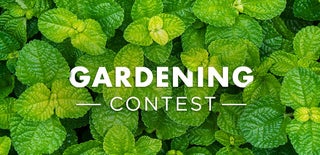Introduction: Green Roof for a Tiny Wooden House
I want to explain to you how we constructed a green roof on our house made out of pallets. It means this project has two strong restrictions. The first one is that it was not advisable to load the roof with much soil and material, as it's supposed to be done on a "commercial" green roof. The second one is that I did not want to spend a lot of money on it.
Step 1: Tools and Materials
Materials
- self-adhesive bituminous felt
- coconut fiber mat
- wood lathes
- substrate for planting
- soil
- screws and nails
- of course, plants... different species of sedum!
Tools
- hand saw
- hammer
- tacker with fasteners
- hot air gun
- measuring tape
- screwdriver
- tons of imagination ;)
Step 2: Waterproofing the Wooden Roof
Once the wooden roof is constructed it is necessary to cover it with a waterproof material. For that purpose I did use a self-adhesive bituminous felt. The reason I chose a self-adhesive membrane is because it's easier to install, with no special tools and skills. Only a hot air gun was used to bend and fix the felt on the edges and corners, and a tacker to fasten the membrane from the bottom part of the roof.
Step 3: Installing the Coconut Fiber Mat
The coconut fiber is a good growing media, ecological and biodegradable. Moreover, thanks to it's structure, substrate and roots will be able to penetrate easily and stay on the roof.
Once the coconut mat was placed over the waterproofing felt I fixed it with four wooden laths on the edges of the roof.
Four narrow wooden laths more were used to form a kind of terraces on the roof. This will give an additional help to soil and plants to stay on the roof despite the slope.
Step 4: Covering the Roof With Substrate
A thin layer of about 1 centimeter should be enough, mainly because I didn't want to load too much the roof. This is the result, with already a few plants already on it.
Step 5: Sedum Harvesting
The choice of the plants was easy: just look at those small plants living on the roadsides, facing low temperatures on winter and hot sun on summer, with virtually no water and set to just a little amount of soil: SEDUM
Thanks to a mobile app it was possible to identidy the four species I found around the place I live.
- sedum acre
- sedum album
- sedum sediforme
- sedum spurium
Step 6: Planting the Sedum
It probably is the most creative part of the project, this is why I decided to ask for help from creative people ;)
I hope you liked this project!!!

Participated in the
Gardening Contest









